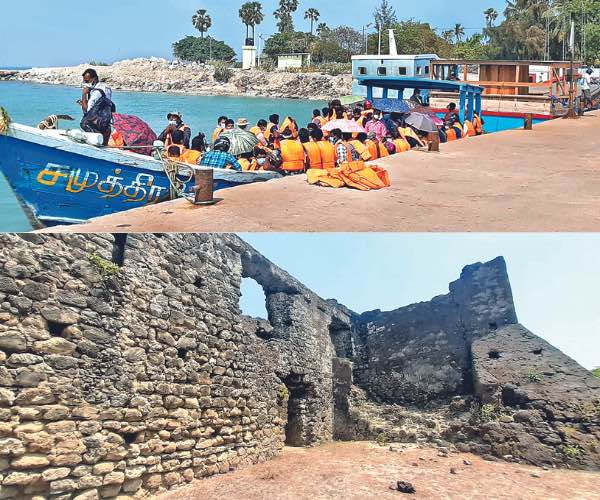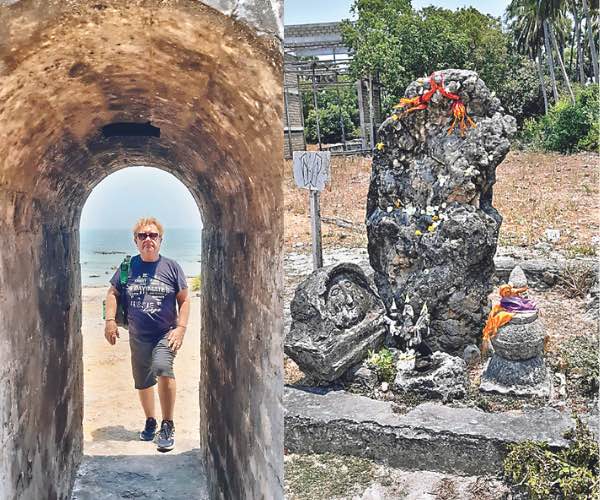
May 17 2024.
views 574The small island of Delft is approximately 90 minutes from Jaffna by road and sea, yet only 50 kilometres from Tamil Nadu, India. I have visited the island three times and am always intrigued by its history, beauty, remoteness and unspoiled charm. The free boat to Delft Island from the mainland takes about 45 minutes and is normally overcrowded. We have booked our own boat with a cabin and open deck arranged for forty people but we are just four only. The sea is calm, the sun is shining and there is just a mild wind, it’s perfect weather. In one of a handful of vehicles on the island, we set off for an amazing history lesson, stunning views and more.

A massive Canadian flag hangs on the wall of our guide's modest home. He now has more relatives living in Canada than in Sri Lanka. The island is 8 km long and 6 km wide with mainly coral or rock on the 26 km waterfront. There are few beaches with only one decent sandy beach that the locals use. It used to have segregated areas for bathing given the different classes of people who lived on the island. In those days the population was about 16,000, but now it’s less than 4,500 people.
The roads all have coral walls on either side. Our first stop is to go and stand inside a large baobab tree with a radius of 52 feet, and then to see a growing stone near a temple. Following the coast road with not another person in sight, we reach the Queen’s Tower; a navigational landmark built by the Dutch.
We carry on with our tour and are taken to see a herd of wild horses. They are bigger than a pony but smaller than a traditional horse. In its more fertile times, the island was famous for breeding and selling horses. Fresh water on the island is now in short supply. The Dutch Fort is a little boring and probably one the least preserved of the forty forts on the island of Sri Lanka.
The Dutch church, hospital and pigeon house proved to be more interesting and better maintained. As we drive around the island there are still many reminders of its former inhabitants, empty decaying houses and no doubt some very sad stories of those who left and those who stayed. Our tour is regularly halted alongside some coral wall where a local toddy maker supplies us with the frothy thick low-alcoholic drink. It needs to be drunk within hours of it being extracted from the palmyrah trees from which the toddy is tapped. They are common on the island.

Tamils of Indian origin have long occupied the island, some in fact returned during the bad times. The Portuguese were on site from about 1520 and called the island “the island of cows”. The Portuguese were around for a hundred years but were more interested in commerce than territory. Then the Dutch came and expanded their influence. There is little evidence of the British occupation of the remaining infrastructure. beaches with only one decent sandy beach that the locals use. It used to have segregated areas for bathing given the different classes of people who lived on the island. In those days the population was about 16,000, but now it’s less than 4,500 people.
The roads all have coral walls on either We carry on with our tour and are taken to see a herd of wild horses. They are bigger than a pony but smaller than a traditional horse. In its more fertile times, the island was famous for breeding and selling horses. Fresh water on the island is now in short supply. The Dutch Fort is a little boring and probably one the least preserved of the forty forts on the island of Sri So, get to Delft soon. You may spot some local ladies with blue/ green eyes who may be descendants of Edward Nolan, an Irishman who served in the British army as the superintendent of the island for 13 years from 1811. He is said to have run it like his own kingdom.
0 Comments